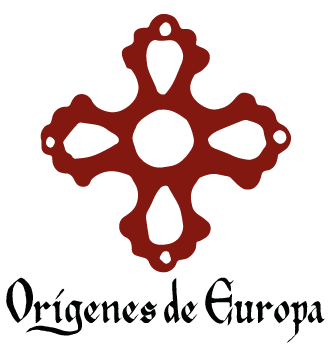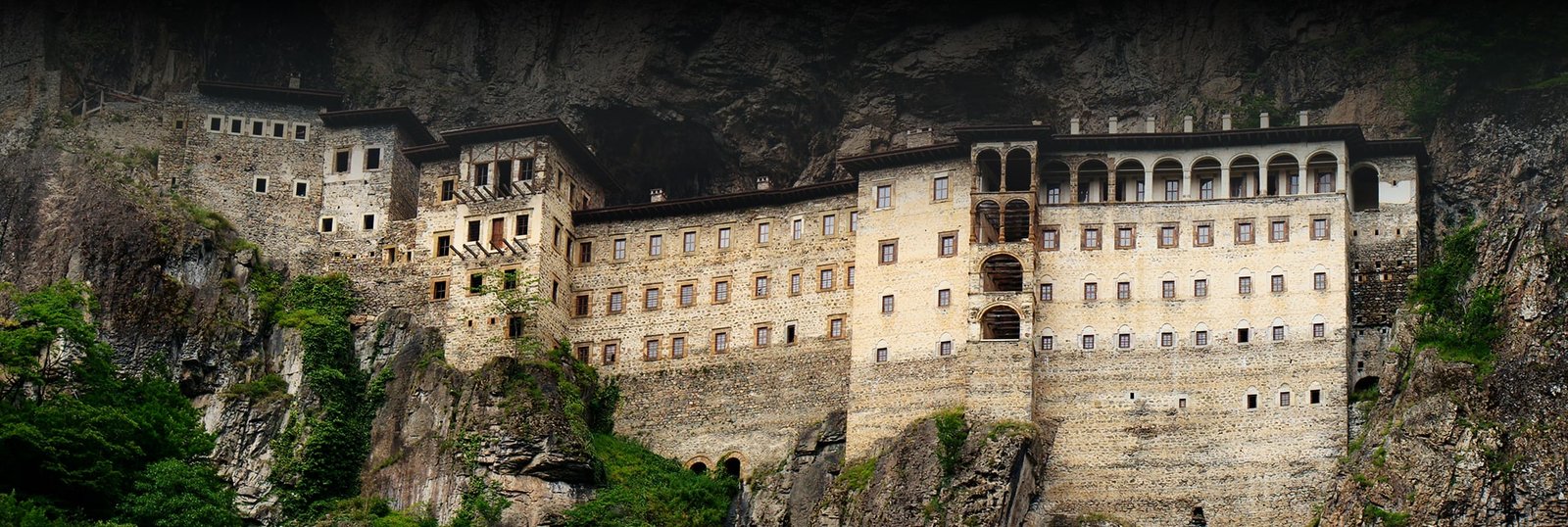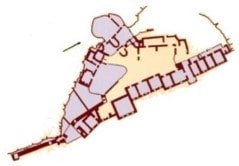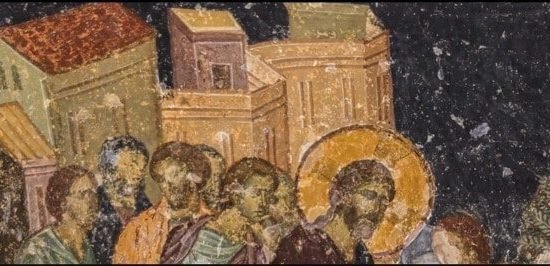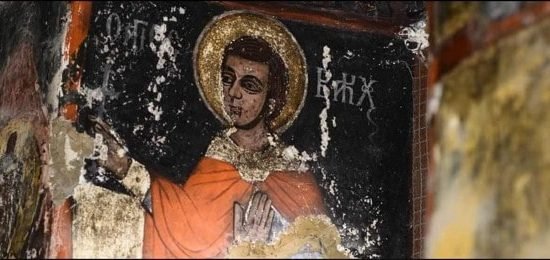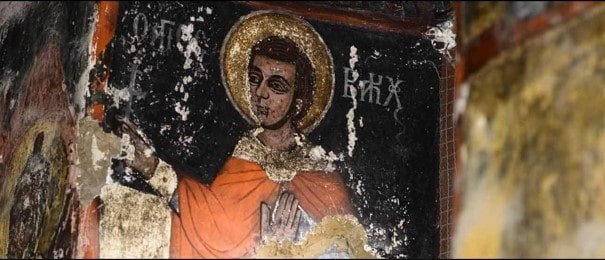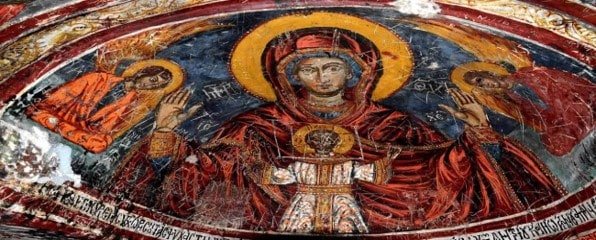The Monastery of Soumela
per person
The Monastery of Soumela is a Greek Orthodox monastery which was dedicated to Theotokos. The monastic complex is located at Karadag (Black Mountain, Sou Mela) which is a part of Pontic Mountains and today in Maçka, Trabzon. Soumela is nestled in a steep cliff at an altitude of about 1200 meters, facing the Altindere Valley. The monastery is accepted one of the most important historical sites of great significance in Trabzon.
Etymologically, there are two explanations of the name. The first one argues that Soumela (Σουμελά) is a Greek word which basically means that Sou (Mountain) and Mela (Dark/Black) while the second one claims that Soumela (სუმელა ) means Trinity in the language of Laz.
According to the tradition, the monastery was founded founded in 386 by two Athenian monks, Barnabas and Sophronios and it had gradually become famous due to an icon of Theotokos (Panagia Gorgoepikoos) which was allegedly painted by Apostle Luke. (William Miller, Trebizond: The last Greek Empire of the Byzantine Era: 1204-1461, Chicago: Argonaut, 1969, 61) Soumela reached its present form during the years of the Empire of Trebizond. Basileus (Megas Kommenos) and Ioannes II had endowed monastery richly, however, the most important largesse which Soumela received were made by Alexios III and his son Manuel III as Soumela was provided with autonomy, hereditary lands, and annual funds. After the Ottoman conquest of Trebizond, Soumela was granted with privileges and protection as the monastery continued to be a popular place to visit amongst monks and pilgrims. In the beginning of 20th century, Soumela was abandoned by its inhabitants because of first the condition of war and later, due to the exchange of population between Greece and Turkey which took place in 1923. The monastic complex was seriously damaged by treasure hunters, or pillagers. The Turkish authorities started restorations and Soumela was reopened to the visitors in 2019.
FORMAL ANALYSIS
Soumela is built in a trapeze-shaped enclosure. The main components of the complex the Rock Church, several chapels, kitchens, student rooms, guesthouse, library, and sacred spring. The large aqueduct supplies water to the monastery and the entrance leads up to the stairways where the visitors can continue towards the inner courtyard. On the left side, there are several monastic buildings including the cave which was converted into a church and constituted the center of monastery. On the right side, there are monks’ cells and housing for guests. (Antonio Sagona, The Heritage of Eastern Turkey from Earliest Settlements to Islam, Macmillan, 2016, 172-174)
The inner and outer walls of the Rock Church and the walls of adjacent chapes are decorated with high quality frescoes. In the inner walls of the Rock Church, the frescoes are safely dated back to the reign of Alexios III, while the frescoes of the chapel are painted in three different periods, therefore, the earliest example of chapel’s frescoes are dated back to the beginning of 18th century. The apse is a cyclic depiction of the life of Virgin Mary, while the narthex and elsewhere are devoted to Christ and a dominating scene of the Last Judgment. Today, unfortunately the frescoes are in heavily damaged condition although the restoration works. During the restorations between 2015-2017, a sacred tunnel was discovered which lead to a place that is regarded as a chapel with the frescoes depicting scenes of heaven and hell as well as life and death.
FERMUDE GULSEVINC
- THE MONASTERY OF SOUMELA © PHOT. https://www.sumela.gov.tr/fotograflar
- THE MONASTERY OF SOUMELA © PHOT. https://www.sumela.gov.tr/fotograflar
- THE MONASTERY OF SOUMELA (SÜMELA )/ TRABZON © PHOT. https://www.sumela.gov.tr/fotograflar
- THE MONASTERY OF SOUMELA (SÜMELA), TRABZON: FRESCOES © PHOT. https://www.sumela.gov.tr/fotograflar
- THE MONASTERY OF SOUMELA (SÜMELA), TRABZON: FRESCOES © PHOT. https://www.sumela.gov.tr/fotograflar
- THE MONASTERY OF SOUMELA (SÜMELA) / TRABZON: DAMAGED FRESCOES © PHOT. https://www.sumela.gov.tr/fotograflar
- THE MONASTERY OF SOUMELA (SÜMELA) / TRABZON: DAMAGED FRESCOES © PHOT. https://www.sumela.gov.tr/fotograflar
Tour Location
The Monastery of Soumela
| Other monuments and places to visit | The Bridge of Maçka, the Monastery of Vazelon and the Monastery o Peristera (Kustul). |
| Natural Heritage | Altindere Valley, National Park |
| Historical Recreations | |
| Festivals of Tourist Interest | |
| Fairs | |
| Tourist Office | |
| Specialized Guides | |
| Guided visits | |
| Accommodations | No hostel in the monastery. Hotel or bed and breakfast in the town of Altindere (20 min by car), Maçka (30 min by car) or Trabzon (1 h 4 min by car). |
| Restaurants | Dereiçi Doga Restaurant (Cosandere Mah. Dere Sok. Küme Evleri No: D:104, 61750 Maçka/Trabzon), Lames Restaurant (Cosandere, 61750, Maçka/Trabzon). |
| Craft | |
| Bibliography | |
| Videos | |
| Website |
| Monument or place to visit | Monastery of Soumela (Μονή Παναγίας Σουμελά) |
| Style | Remains of Late Antique fourth century local masonry structures, later medieval as well as modern addictions. |
| Type | Enclosured monastic complex. |
| Epoch | 4th century – present. |
| State of conservation | Good condition (repeated restorations). |
| Degree of legal protection | |
| Mailing address | Altindere, 61750 Maçka/Trabzon |
| Coordinates GPS | 40°41′24″N 39°39′30″E |
| Property, dependency | |
| Possibility of visits by the general public or only specialists | Accessible to public visitors. |
| Conservation needs | No current conservation need. |
| Visiting hours and conditions | Generally open from 8:00 a.m. to 6 p.m, closed on Sunday. |
| Ticket amount | 100 TL. |
| Research work in progress | There is no current restoration going on the site. |
| Accessibility | Good. To reach the entrance of the complex visitors will have to take a vehicle for transportation from Maçka (121, 133A, 203C, 376) or registering for the tours for approximately sixteen kilometers: cars are rarely admitted to the monastery entrance and this part of the route is not accessible by large tourist bus. |
| Signaling if it is registered on the route | Not yet registered. |
| Bibliography | - William Miller, Trebizond: The last Greek Empire of the Byzantine Era: 1204-1461, Chicago: Argonaut, 1969. - Antonio Sagona, The Heritage of Eastern Turkey from Earliest Settlements to Islam, Macmillan, 2016 - Anthony M. Bryer, The Byzantine Monuments and Topography of the Pontos, ACLS Humanities, 2009. |
| Videos | Youtube |
| Information websites | sumela.tr sumela.com wikipedia.org pontosworld.com |
| Location | Located on the steep cliffs of Karadag, facing the Altindere Valley. (Trabzon, Turkey) |
